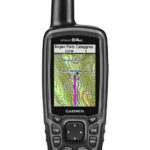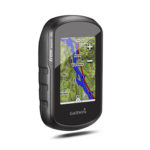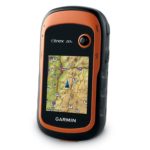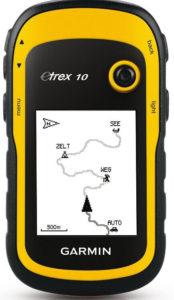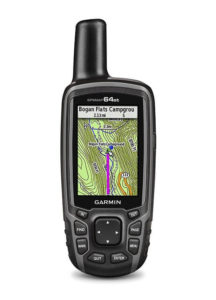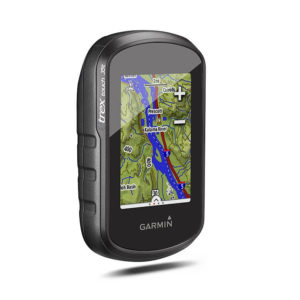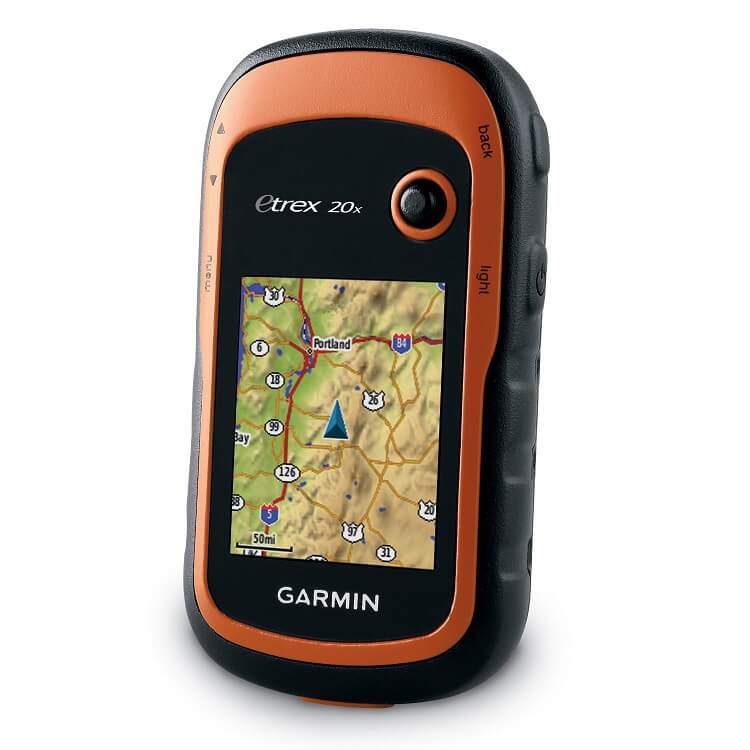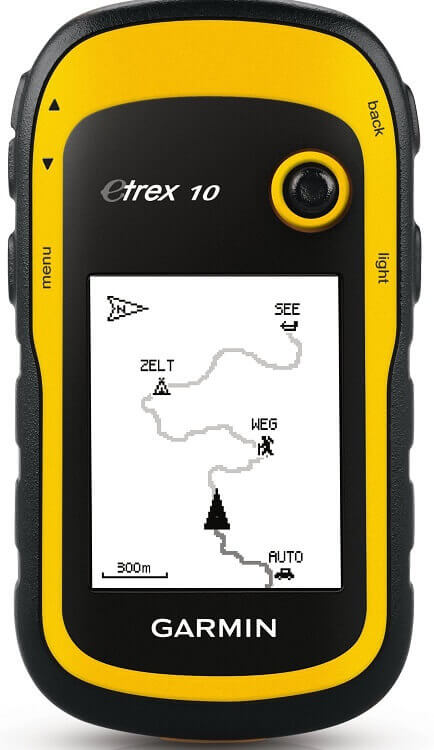Best Handheld GPS for Fishing

Using a handheld GPS for fishing is an excellent way to keep track of your favorite locations. While using your GPS maps on your phone may seem like a good way to follow your location, there are some shortcomings with using your Smartphone. Using the best handheld GPS allows you to be more interactive, pinpoint your locations, and use it for a variety of other functions. If you’re considering getting a GPS to use for fishing, this article will help you decide which one is the best handheld GPS for fishing.
Best Handheld GPS for Fishing Comparison Chart
Image | Product Name | Weight | Editor Rating | Price |
|---|---|---|---|---|
Garmin GPSMAP 64st (Editor’s Choice) | 9.28 ounces | |||
Garmin eTrex Handheld GPS Navigator | 4.96 ounces | |||
Garmin eTrex 20x | 4.96 ounces | |||
Garmin eTrex 10 Worldwide Handheld GPS | 5 ounces |
Top 5 Handheld GPS for Fishing Reviews
Color Screen
This GPS unit has a color screen that is easy to read in direct sunlight. The screen is large enough to read easily. You can hold the GPS comfortably in one hand while you’re watching where you’re walking.
Good Resolution
The GPS has a good resolution that allows you to see details clearly and easily. The display has 160 x 240-pixel resolution, which makes it easy to see your area. You can determine the best route when you’re walking around with the GPS.
High Sensitive GPS
The highly sensitive GPS will pick up your location, no matter where you are. The device includes a quad helix antenna, which is powerful enough to find you, even if you’re in the middle of nowhere. It is difficult to get completely lost when you’re using this GPS.
Basemap
The unit includes a built-in worldwide basemap that you can use anywhere you want to go. It includes shaded relief, which is helpful when you don’t know what your exact location is. With the basemap, you can determine your location quickly and easily.
Lots of Storage
The unit includes 8GB of internal memory, allowing you to save your favorite waypoints, and pinpoint different locations. There is a microSD slot that allows you store other information when the internal memory is full.
Pros
- The size is compact
- Works well in rain
- Has good grip
Cons
- The screen can give out easily
2. Garmin eTrex Handheld GPS Navigator
Excellent Resolution
The GPS includes over 65 thousand colors to help you navigate your way around any area. The display is easy to read in direct sunlight, and the resolution is good. It has a resolution of 240 x 320 pixels to show more detail in your area.
Load Maps
The GPS includes 3.7GB of internal memory, allowing you to store your favorite maps directly to the device. It includes a microSD slot that gives you extra memory to store even more maps. You can download a variety of maps to help you find your favorite location.
Basemap
The device has a pre-loaded basemap that lets you find your starting point quickly and easily. The basemap has shaded relief to help you find the starting point easily. It’s practical for anyone that needs to find their favorite locations.
Sensors
The sensors include different features to make any hiking trip fun and exciting. It has a tilt compensated electronic compass and a barometric pressure gauge that assists in tracking the weather. You’ll know your precise altitude, and track the barometric pressure in your area.
Wireless
The device has a wireless data transfer option to give your favorite waypoints to other devices. You can share your tracks, routes, and geocaches with other devices by hitting the send button. It’s ideal for those that want to share their information with other people.
Pros
- It has excellent support
- Submersion rated
- It is compact
Cons
- The redraw is slow
3. Garmin eTrex 20x
Color Display
When you’re out walking around, you need a GPS that is easy to read. This unit includes a color display that makes it easy to navigate your way around. It has excellent resolution to see where you’re going.
Storage
The unit includes 3.7GB of internal storage, making it ideal for those needing to save their favorite places. You can use a microSD card to upgrade the memory, and you can download a variety of maps to the device.
Basemap
The device includes a preloaded basemap with shaded relief. You can always find your starting point quickly and easily when you’re using this device. It’s ideal for anyone that loves the outdoors.
Sensitive GPS
You can find your location quickly and easily when you’re using this GPS to navigate your way through any area. It will predict where you’re going, which makes it easy to determine where you are, even in deep canyons and heavy coverage.
Pros
- Reasonable price
- Download cache locations
- It is easy to use
Cons
- The satellite can sway a little bit
4. Garmin eTrex 10 Worldwide Handheld GPS
Good Display
The device has a large enough screen to read everything easily. It includes a pre-loaded basemap that makes it easy to see where your starting point is. The device is durable enough to handle any type of outdoor activity.
Fast Positioning
The device has an advanced GPS system that can track your location quickly and easily. It has a reliable signal that won’t get lost when you go into a deep canyon. No matter where you’re going to use the device, you can rely on it to find your exact location.
Waterproof
If you’re planning on using a GPS device for fishing, you need one that can handle being exposed to water. This device is waterproof against splashes, rain and other forms of water exposure.
Good with Other Products
You can use this GPS device with other Garmin products, allowing you to transfer data to a backup device. You can share your favorite points with your friends, which is ideal for any type of trip.
AA Batteries
Since the device uses AA batteries, you can change them out when they start to get too low. You will have up to 20 hours of use with the batteries, which isn’t too bad for anyone going on a day trip.
Pros
- It is durable
- Easy to use
- Long battery life
Cons
- No maps included
5. Garmin GPSMAP 62S Handheld GPS
Rugged Design
If you’re looking for a tough GPS unit, this one is the one for you. It has a large screen that is easy to read in direct sunlight, and includes a decent resolution. The resolution is 160 x 240, which isn’t bad for a handheld GPS unit.
Picture Navigation
The device includes an option that allows you to download Garmin Connect photos to help you navigate your way around more accurately. It includes a worldwide basemap and shaded relief to offset the different colors on the device.
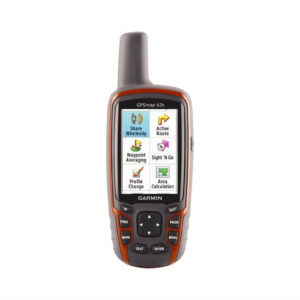
Electronic Compass
The device includes a 3-axis tilt compensated electronic compass that allows you to find your way around any place quickly and easily. There is a barometer and altimeter to help you see what type of weather is heading your way. It’s ideal to ensure you don’t get caught in any bad weather.
Data Sharing
When you find your favorite waypoint, you can share the data wirelessly, ensuring you’ll always know where it is. You can share tracks and routes with other Garmin devices, which is good if you need to use a backup GPS device for your adventure.
Storage
The device includes 1.7GB of internal memory, and a microSD card slot to help you store everything you need. You can store topographic, marine, and road maps to the device.
Pros
- Sensitive GPS
- Captures satellites easily
- It is rugged
Cons
- Lots of steps for certain functions
How to Choose the Right Handheld GPS for Fishing
Choosing the best handheld GPS for fishing doesn’t have to be overwhelming. If you’re thinking about making the switch over to a handheld GPS, here are some things you should consider before you decide.
Size
The size of the unit should include the size of the screen and the total size of the unit. Depending on your choice, you may be left with a GPS unit that is too big for your hands. You want to make sure the screen is easy to read, but you don’t want it to be too bulky.
If you’re on a boat, or walking around a lake or other body of water, the size of the GPS should be easy to hold. Keep in mind that the size of the GPS will affect the weight of the GPS, as well. If you get one that’s too big, it won’t be good as a handheld device.
Interface
While most technology has started to incorporate touchscreens, you should consider when and where you’re going to use the handheld GPS. Even though you enjoy the touchscreen option, if you need to wear gloves, using a touchscreen becomes obsolete.
That’s why using a GPS that has buttons to scroll through the menu will help you when it’s cold. Though the buttons can make the GPS a bit heavier, you can use them easier when it’s cold. If you don’t mind using a GPS without any gloves, you can still go with the touchscreen option.
Barometer
When you’re outside, it’s important to know how the weather is going to be. Having a handheld GPS that has a barometer or altimeter can help you track the weather in your area. An altimeter will tell you the precise altitude, and takes barometric data into account.
If you’re concerned about getting caught in bad weather, you should consider using a GPS with the barometer feature. You can make sure you don’t get stuck outside if bad weather is on is way in, and gives you a more accurate reading than your weather app on your phone.
Electric Compass
One of the best things about using a handheld GPS is knowing where you are in the world. One other thing that is useful is an electronic compass. It would make sense that a GPS unit will tell you which direction you’re going, but they only work so well.
Using a handheld GPS with an electronic compass will tell you what direction you’re facing when you’re standing still. It’s a good way to plan your route, and ensure you’re going to go in the right direction. This way, you don’t need to take a few steps, realize you’re going the wrong way, and need to turn around.
Wireless Data Transfer
They say that sharing is caring, and using a GPS with a wireless data transfer can make any adventure a lot more fun. When you have a handheld GPS with wireless data transfers, you can share data. This includes sharing waypoints, routes, tracks, and other information easily.
While you will need to share with devices of the same brand, you can transfer it to other devices you own. This allows you to take different GPS units out, especially when the battery is running low. You can also transfer data to your friends.
Preloaded Maps
Most GPS units have some maps already installed on them, but there are others that have more maps available. You can also purchase extra maps, which can help you navigate any area you want to go. You can store the maps on a CD or microSD card, which helps when you’re using a different GPS unit.
No matter how you’re planning on using the maps, you can upload them to any GPS unit. It allows you to explore new places, and find new waypoints you may not have noticed before. It’s a good way to use your handheld GPS.
Conclusion
Using a GPS device for fishing isn’t a terrible idea, especially if you’re fishing in an area you have never been to before. If you’re looking for the best handheld GPS for fishing, the Garmin GPSMAP 64st is the perfect choice. It works in any lighting conditions, and offers plenty of features that makes it easy to use in any environment. The battery power is good, and you can use the device all day long.
We like to share product recommendations with you and hope you like them! Just to make you aware FishingLab may collect a small share of sales or other compensation from the links on this page.

